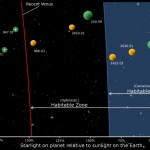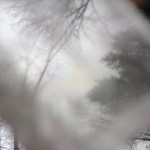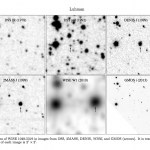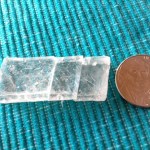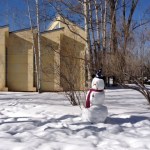astro
Just read a series of interesting articles on inquiry based science:
Inquiry Science rocks: Or does it - David Klahr tries to test the efficacy of discovery learning (APS News 12. 2012).
Direct Instruction rocks: Or does it - Richard Hake takes issue with Klahr's inferences.
To be contrasted with:
The Efficacy of Student-Centered Instruction in Supporting Science Learning - Granger et al Science 338 105 (2012) [sub]
The amount of data on the efficacy of the different teaching methods is still pathetically small.
I am inclined to believe that student center instruction or inquiry science is…
Knock. Knock.
Hello?
Is this thing still working?
Anyone there?
Ok, it is end of semester and I am out of excuses.
Time to clear out some backlog of stuff to read.
Am I Wrong? - Bruce Alberts, Editor in Chief of Science, worries about the future.
He is rarely wrong.
Time Crystals - interesting article from the increasingly pro-active Simons Foundation on Frank Wilczek's provocative idea on multi-stable ground state configurations that may cycle through different but energetically equivalent configurations. Berkeley group is trying an experimental test of the concept. Won't be definitive,…
The department of Astronomy & Astrophysics is proud to announce a special colloquium by a distinguished visitor:
TITLE: Emission Lines Accompanying Gamma-Ray Flares from the Tidal Disruption of Dyson Spheres by Binary Intermediate-Mass Black Holes at z ~ 10.
Special Lunch Talk, Monday, April 1, 2013
by Professor Rajesh Koothrappali, Circumference Institute
[Host: Hofstadter]
ABSTRACT: "I will begin this talk in medias res by assuming that Dyson spheres can exist as early as z~10. I will describe general relativistic electromagenetohydrodynamic simulations of the disruption of a Dyson…
this is not a Planck post...
Visalization of the Gödel Universe
WMAP-9
Who Wrote Shakespeare's Plays? - Astrophysicist lets you pick the priors and decide...
Harvard did WHAT?
"Detection of Carbon Monoxide and Water Absorption Lines in an Exoplanet Atmosphere" - Konopacky et al Science (sub) - HR8799 good S/N spectra
"Direct imaging discovery of 12-14 Jupiter mass object orbiting a young binary system of very low-mass stars" - Delorme et al (arXiv) - substellar circumbinary companion to an M dwarf binary
why, yes, I am procrastinating...
and there is Moore:
Moore's Law in Astronomy and UFOs…
Answers on a single sheet double spaced 12 pt font, by monday, please, including figures.
The NASA Advisory Council, subcommittee on Astrophysics, has started a Roadmap Exercise.
The roadmap exercise was called for at the February 2013 meeting.
The roadmap is intended to:
Articulate NASA’s astrophysics vision looking out 30 years
Science-based -> identify key science investigations and challenges for the future
Identify notional missions & technologies needed to enable the science
Developed by a task force of the APS (AstroPhysics Subcommittee)
Include community input, including Town…
Planets, planets everywhere
and on some there will be drops to drink.
An interesting confluence of research occurred over the last few months, leading to:
"A revised estimate of the occurrence rate of terrestrial planets in the habitable zones around Kepler M-dwarfs" by Ravi kumar Kopparapu PSU (arXiv), ApJLetters in press
Bottom line: about half of low mass stars in the Solar neighbourhood are estimated to have earth size planets in their habitable zone!
The implications are that habitable planets may be very common and the closest one within a few light years.
We'll know for sure very…
Inspired by Tim Hamilton's facebook post I played a bit with my old bit of silfurberg this weekend
In particular, I was curious to test whether there was some plausibility to birefringent calcite being the "sunstone" of the Saga's.
This evening, about an hour before sunset, we had nice thick rain clouds moving from Ohio, so, as I had promised the Astronomers fb group, I popped out to check what I could see.
After a short time playing with rotation, looking with peripheral vision and doing some slow scans, I gave the biggest piece to my daughter (who I am reasonably sure has not read this…
There were a number of interesting results reported today, the start of what promises to be an interesting week:
IR spectra of HR 8799 planets - Scharf at SciAm blogs reports on the Oppenheimer et al paper using the P1640 at the Palomar telescope.
Their interpretation of the rather low signal-to-noise low resolution spectra is that the outer two planets have little methane in their upper atmosphere and the inner planets do seem to have methane and that there is evidence for ammonia in the outer planets.
I suspect more data is needed.
HR8799 is an interesting system, I'm still not convinced…
I think we should take some pie over, in person.
Discovery of a Binary Brown Dwarf at 2 Parsecs from the Sun - Kevin Luhman, ApJLetters in press.
That is just over 6 light years away, making it the third closest system from the Sun, and the closest known substellar system, only the α Cen triple system, and Barnard's Star, an old red dwarf, are closer.
Detection images for our new neighbour. The WISE discovery image is middle bottom, the Gemini image at the bottom right shows the resolved pair clearly.
This is a spectacular and somewhat surprising discovery, that something could be this…
When I was about 9 years old, my grandmother gave me a piece of Iceland Spar, it had belonged to my grandfather and she felt I ought to have it.
Iceland Spar
This is the piece, my kids have it now, somewhere along the way it broke into three pieces while in storage.
She showed me the birefringence, I remember playing with it for hours. I also remember having had it impressed upon me that it was important, not just a curio, though I am also acutely aware of the possibility that I have reinterpreted my partial memories based on what I learned later.
Birefringence in Iceland Spar.
The…
The Dark Matter Crisis Continues
Pavel and Marcel give the back story of what happened at scilog and the social media mud flinging over MOND and other alternate conjectures for modified gravity.
Also on the fb "Astronomers" group
"The Dark Matter Crisis" will have a guest blog entry tomorrow on the science issue.
It really is true that the Internet interprets censorship as damage and reroutes...
The guest post on CMD vs MOND by Scott Dodelson is up at the Dark Matter Crisis blog (see comment below)
Sequestration begins on Friday, and this time for real... it is, ironically, Hubble Space Telescope Proposal Deadline Day, but then everyday is a Proposal Day.
I'm guessing that this year the "Hubble Constant" will decrease.
The Agencies are now revealing their plans to deal with sequester.
As you recall the amount is $83 billion from the current fiscal year's budget.
We are almost half way through the current fiscal year.
There is not actually a budget yet for the current fiscal year, the US is operating on a Continuing Resolution through to late March, and if a budget is actually approved,…
Time magazine just ran an article "Cosmic Fuggedaboudit: Dark Matter May Not Exist At All" - a revisit of the MOND hypothesis.
The story keys off the recent article by Ibata on the Andromeda dwarf galaxies (sub) arXiv pdf, and here is the full ApJ article on arXiv.
Independent of these recent developments, it highlights the continued persistence of the notion that maybe Cold Dark Matter needs to be revisited.
Sean had good discussion of the issues over at Cosmic Variance last year, and recently Kroupa started a blog, the The Dark Matter Crisis, now at scilogs.com/the-dark-matter-crisis/
For…
A couple of astrostatistics related announcements:
1) The Astrostatistics & Astroinformatics Portal is open.
"The ASAIP provides searchable abstracts to Recent Papers in the field, several discussion Forums, various resources for researchers, brief Articles by experts, and lists of Meetings. The site will be used for public outreach by four organizations: International Astrostatistics Association (IAA, to be affiliated with the International Statistical Institute), American Astronomical Society Working Group in Astroinformatics and Astrostatistics, International Astronomical Union…
Earth Impact Calculator
Ok, that was close, and I don't mean the zip by of li'l old 2012 DA14 this evening.
The Chelyabinsk meteor looks to have been on the high end of the range of quick and dirty estimates, with impact energy of maybe 300 kTon equivalent. This is a size impact we'd expect every few decades, maybe, quite a bit smaller than Tunguska, but larger than anything we know of in the last 20 years.
Meteors come in with speeds ranging from 10-70 km/sec.
This one appears to have had a speed of ~ 20 km/sec, which gives it kinetic energy of 2*108 J/kg
As you know, the handy unit here…
A bolide hit the Earth over Russia, breaking up at low altitude, causing a strong shock that reached the ground causing damage.
There are reports of some fragments hitting the ground.
Good summary and videos at The Age
video from Russia Today
the fragments will be valuable and probably show up soon on ebay
there was no shootdown, the breakup is normal when the meteorite gets lower down into the atmosphere.
There are no issues with radiation [sic]
looks like a fairly slow shallow angle impact, detonating with kiloton++ energy below few km altitude - guessing from the video
that'd make it a…
The shadow of a shadow of a planet... and other fun Kepler discoveries
Exoplanets in Multi-body Systems in the Kepler Era is a conference currently under way at the Aspen Center for Physics
Physicists hard at work
The meeting is very vibrant, with a mostly very young crowd of active researchers.
There have been a number of very interesting talks reporting some very interesting discoveries, many of which are embargoed...
One, still unpublished discovery, from Josh Carter et al, for a KOI-not-to-be-named, used transit geometry from two planets and measurements of the stellar spin from…
Our future foretell
Galaxies of stellar poems
From space science spring
Inspired by Jason Wright's Thesis, Lucianne Walkowicz called out Astronomers on facebook to describe their current research as Haiku
To the Occasion
All Astronomers Sprung Forth
Poetic Research
There is a collection of some of the contributions at
Rhymes Like Science
Where my feeble efforts fall
Amongst stellar prose
Dynamics of Cats
Cold winter sky glow
crushed stars dance in my dreams
where will life go now?
Clearly this can be expanded on: we need iambic pentameter, limericks, and poetry of the sagas - proper…
The Aspen Center for Physics does a number of public outreach and engagement activities.
A new and quite interesting effort underway is Radio Physics, in collaboration with KDNK community radio.
The project links (visiting) physicists with local AP physics classes, who do a 30 minute group interview, live, on the topic du jour.
When available in person, the interview is preceded by a mini-physics cafe, where the whole class meets with the victim at a local coffee shop and gets to quiz them on pretty much anything.
And, of course, the whole thing is not just broadcast live, but archived for…
The "Physical Applications of Millisecond Pulsars" conference is under way at the Aspen Center for Physics, going through thursday when the X-Games take over.
The meeting started with surveys of current observational and instrumentation projects, in particular the amazing serendipitous discoveries being made by NASA's Fermi γ-ray observatory, in conjunction with ground based radio telescopes, and the new observatories being built.
This was followed by a session on pulsar magnetospheric physics, optical companions to pulsars and other goodies.
Today we get tests of theories of gravity, and…
